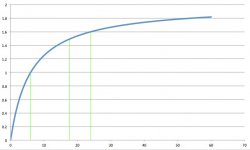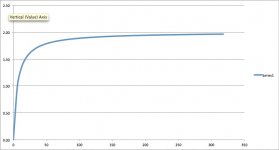During 9 ball league last night, my opponent had a break cue weighing 25oz. He is an above average player. His break speed was only about average. After the match we had a conversation about break cue weights, and he was not open to my thoughts on optimal weight for the break cue. Here is my thoughts, just wondering if anyone agrees.
I played baseball and softball all of my life. Now, it makes sense that the heavier the weight, the further the ball goes, but why so.....? It is because after the bat makes contact with ball, the actual bat speed slows less than a lighter bat would. I really can't remember the figures, but lets say your swing a 30oz at 40mph, it might drop to 30mph after ball contact, where a 28oz at 40mph may drop to 25mph. therefore the 30oz bat would hit the ball further because after contact, bat speed drops less. It all makes sense and seems to translate to breaking in pool, but I don't agree, because is in baseball, you are using larger group muscles to create bat speed, but in pool for the most part, you are using virtually just your biceps, a small muscle group.
Because your are using small muscle groups to create acceleration vs. your entire body, I believe you need a lighter cue. If you have a heavier cue, it would be harder to get to top speed. Yes, after cue ball contact, you would keep more speed on because of physics, but look at it this way: 25oz cue, top cue speed 30mph, after contact speed, 25mph, but a lighter cue lets say 18oz: top speed 35, after contact speed, 28mph.
Now just on a side note, I am 6'1" 240 lbs, and I hit homers in softball at will, I use a lighter 27oz bat. I feel that I get a higher bat speed from a lighter bat, and I believe because of my mechanics in my swing, I excellerate through the ball very well and keep my after contact speed high.
These number are not exact or factually tested by me, and I am sure someone did, I just haven't come across that info. Just curious what others thought about this. Also, It is probably different from person to person, determining on how strong they are or how much fast twitch vs slow twitch muscle fibers they have.
I played baseball and softball all of my life. Now, it makes sense that the heavier the weight, the further the ball goes, but why so.....? It is because after the bat makes contact with ball, the actual bat speed slows less than a lighter bat would. I really can't remember the figures, but lets say your swing a 30oz at 40mph, it might drop to 30mph after ball contact, where a 28oz at 40mph may drop to 25mph. therefore the 30oz bat would hit the ball further because after contact, bat speed drops less. It all makes sense and seems to translate to breaking in pool, but I don't agree, because is in baseball, you are using larger group muscles to create bat speed, but in pool for the most part, you are using virtually just your biceps, a small muscle group.
Because your are using small muscle groups to create acceleration vs. your entire body, I believe you need a lighter cue. If you have a heavier cue, it would be harder to get to top speed. Yes, after cue ball contact, you would keep more speed on because of physics, but look at it this way: 25oz cue, top cue speed 30mph, after contact speed, 25mph, but a lighter cue lets say 18oz: top speed 35, after contact speed, 28mph.
Now just on a side note, I am 6'1" 240 lbs, and I hit homers in softball at will, I use a lighter 27oz bat. I feel that I get a higher bat speed from a lighter bat, and I believe because of my mechanics in my swing, I excellerate through the ball very well and keep my after contact speed high.
These number are not exact or factually tested by me, and I am sure someone did, I just haven't come across that info. Just curious what others thought about this. Also, It is probably different from person to person, determining on how strong they are or how much fast twitch vs slow twitch muscle fibers they have.

